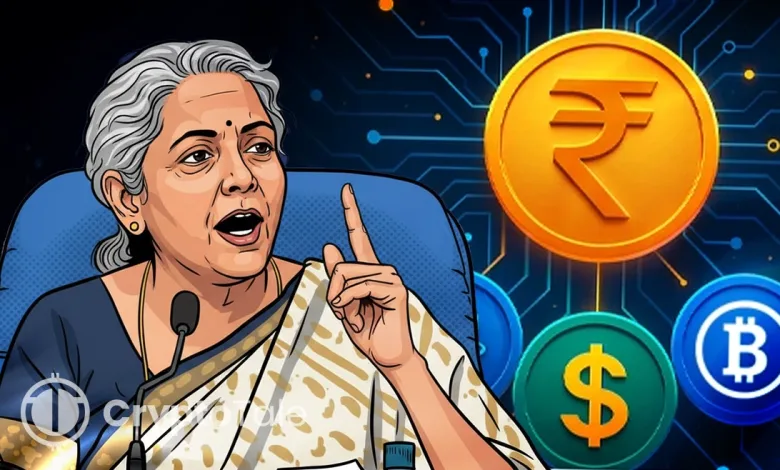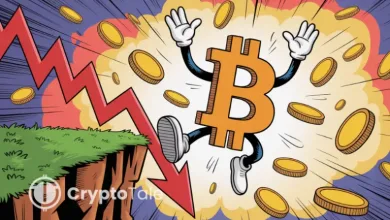India’s Forward Approach Toward Regulating Stablecoins

India has long taken a cautious stance on digital assets, particularly regarding stablecoins and private cryptocurrencies. The country’s regulatory approach has been defined by watchfulness and risk aversion rather than outright prohibition or endorsement. For years, policymakers have focused on containment while observing global trends that continue to redefine the digital economy.
On October 3rd, this stance appeared to shift when Finance Minister Nirmala Sitharaman declared that “countries must prepare to engage with stablecoins, whether they welcome the change or not.” The statement quickly made waves across the global financial community. It was interpreted as a signal that India is ready to move beyond the defensive posture it has maintained for years toward one of structured engagement.
This is an important moment considering that India has been hesitant to adopt private cryptocurrencies in the past. The Ministry of Finance and the Reserve Bank of India (RBI) have continuously cautioned about the dangers of unregulated digital assets that they categorize as virtual digital assets (VDAs). India has not legalized these products, but levies taxes on transactions involving them. The fact that even skeptical regulators have come to accept that stablecoins are here to stay indicates that more and more people are realizing that digital assets are entering the future financial sector.
Stablecoins are cryptocurrencies that are anchored to a stable asset, such as the U.S. dollar, the euro, or a basket of commodities. They are designed to mitigate volatility and preserve the benefits of blockchain-based transactions. They have evolved into niche tools utilized by crypto traders to facilitate essential elements of modern finance, enabling remittances, settlements, and liquidity transfers. The fact that India is embracing its increasing role demonstrates a consciousness that neglecting such tools can leave the nation alone in the world of global financial innovation.
Current Policy Framework and Its Limitations
India’s official policy toward digital assets has historically been one of caution and coordination. Sitharaman has repeatedly stressed that crypto-related issues “require immediate attention” and that global cooperation is essential. The Economic Times previously quoted her emphasizing that piecemeal national policies would not work. At the same time, NDTV reported her insistence that India’s response must align with the G20 framework to ensure uniform oversight.
Currently, India’s digital asset policy is based on three main pillars. First, the government and the RBI continue to express reservations about private cryptocurrencies. Their concern lies in the potential of unregulated digital assets to destabilize the financial system. Second, India taxes cryptocurrency and stablecoin transactions without granting them legal recognition. This approach allows the state to monitor market activity while discouraging widespread speculative adoption. Third, the government is promoting its own digital currency—the Central Bank Digital Currency (CBDC) or digital rupee—which has full legal status and is backed by the Reserve Bank of India.
Despite these measures, the policy framework remains incomplete. Stablecoins, though not officially recognized, are quietly gaining traction within the economy. In remittances, blockchain trading, and settlements, stablecoins are being used as convenient alternatives to traditional currency transfers. Industry data cited that India could save tens of billions of dollars annually if it integrated stablecoin systems into formal payment infrastructure. The potential for efficiency and cost reduction is vast, yet unrealized, primarily due to regulatory indecision and institutional caution.
Government documents reviewed reveal that the Reserve Bank fears the widespread use of dollar-pegged stablecoins could fragment India’s financial architecture. Policymakers worry this could reduce the dominance of the Unified Payments Interface (UPI), the system credited with revolutionizing India’s digital transactions. The concern is that privately issued stablecoins might create parallel payment ecosystems outside the RBI’s supervision, eroding monetary control.
Pressures Driving Policy Re-evaluation
India’s gradual move toward a more forward-looking approach is not occurring in isolation. Both global and domestic forces are pressuring policymakers to redefine their strategy. Across the world, major economies are building clear frameworks for stablecoins. In the United States, the GENIUS Act has proposed detailed rules for dollar-backed stablecoins, aiming to integrate them within the existing financial regulatory structure. According to sources, these developments have prompted India to re-examine its position to avoid being left behind.
Reuters reported in early 2025 that senior Indian officials confirmed the government was reassessing its stance on crypto and stablecoins due to changes in global policy. In an ever-changing financial landscape, where tokenized assets and blockchain-based instruments are transforming more traditional systems, India recognizes that inaction over the long term may lead to a loss of competitiveness and a diminished ability to innovate.
Pressure is also being exerted on domestic stakeholders. Fintech leaders, financial experts, and former RBI officials have encouraged the government to provide clear policy direction. Reports cited multiple advisors that India is on risk of making the same policy drift that characterized its initial attitude toward cryptocurrency regulation. In the absence of regulatory clarity, domestic institutions remain reluctant to innovate, and venture capital investment in blockchain technologies has come to a standstill.
Related: India Tops Global Crypto Adoption Index for the Third Year
The economic cost of this uncertainty is high. Analysts estimate that India could save up to $68 billion annually by effectively adopting stablecoin technology in remittances, settlements, and tokenized trade. For a nation with one of the world’s largest remittance inflows, the efficiency gains are too substantial to ignore. However, to realize this potential, India must build clear guidelines for issuance, reserve management, and consumer protection.
Meanwhile, the coexistence of private stablecoins and the RBI’s digital rupee introduces another challenge. Grant Thornton India has noted that India must ensure these two systems complement rather than compete with one another.
Opportunities and Challenges in a Forward Approach
A progressive direction offers India tremendous opportunities and also challenges. On the opportunity side, stablecoins have the potential to transform the way India manages money flows in the global arena. They are able to send remittances much more quickly, reduce transaction costs and increase the financial inclusion of millions of unbanked people. For businesses, stablecoins can facilitate near-instant settlements and reduce reliance on traditional intermediaries. This efficiency would enhance the competitiveness of India in a global market that is increasingly becoming digital and liquid.
Nevertheless, the risks are still high. Stablecoins can create market instability when their reserves are not adequately secured or when issuers lack transparency. Any loss of trust in a major stablecoin would cause financial contagion, affecting both banks and exchange rates. Furthermore, regulators also fear capital flight, because stablecoins may provide unregulated transfers that circumvent foreign exchange limits. The outcome may result in a strain on the rupee and a lack of control over capital inflows and outflows.
Fragmentation is another concern. The proliferation of multiple digital payment systems could undermine UPI’s status as a unified national platform. If interoperability standards are not established, the digital payments landscape could become confusing for consumers and inefficient for institutions. Decrypt has reported that a lack of regulatory ownership compounds this issue, as no single ministry or regulator has taken full responsibility for stablecoin oversight. The resulting bureaucratic inertia has delayed meaningful progress.
Consumer protection must also keep pace with innovation. To regulate it effectively, stablecoin reserves would need to be audited, their issuance transparent, and the ability of users to access redress clear. In the absence of such mechanisms, the likelihood of fraud, mismanagement, or treachery increases.
India may also address these risks by adopting a licensing regime on issuers of stablecoins that has stringent capital reserve and governance requirements. New stablecoin systems may be tested in regulatory sandboxes in controlled settings before being implemented nationally. The G20, IMF, and the Financial Stability Board would also play a pivotal role in international coordination to standardize compliance and avoid regulatory arbitrage.
Related: India’s FIU Issues Notices to 25 Offshore Crypto Firms for PMLA Breach
The recent comments of Sitharaman have given this discussion a new impetus. By asking countries to be prepared to work with stablecoins, she has successfully framed the debate as one of readiness, rather than preference. The previous emphasis on the need for global coordination of crypto policy remains influential in shaping the direction India follows. To policymakers, the problem lies in the fact that India’s transformation from an observer to an engaging country should be strategic, measured, and inclusive.
Conclusion
The future of India’s digital finance will hinge on whether it becomes a digital finance leader or a conservative bystander in a rapidly changing global economy. Although the idea of stablecoins is treated with skepticism, it has become a fact of the financial future. It is not whether the government should or should not engage them, but how it must do so in a responsible manner. As one of the fastest-growing economies and the largest democracy, India is being closely watched as it adjusts to the new era of digital money.





